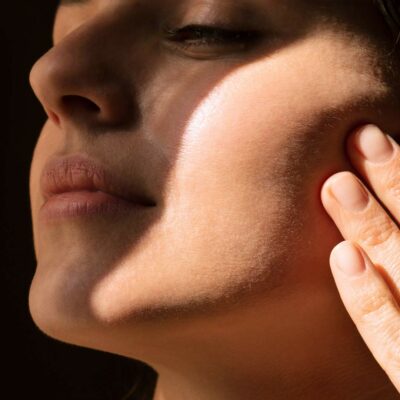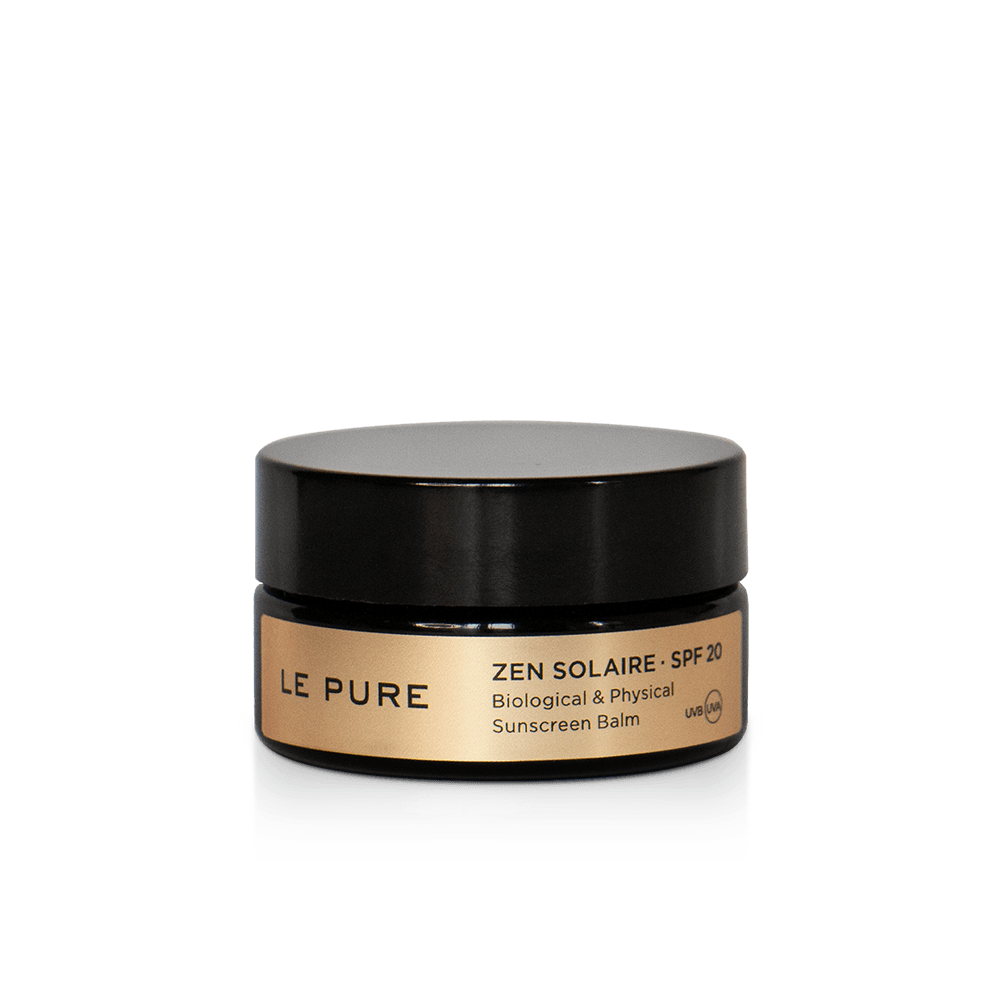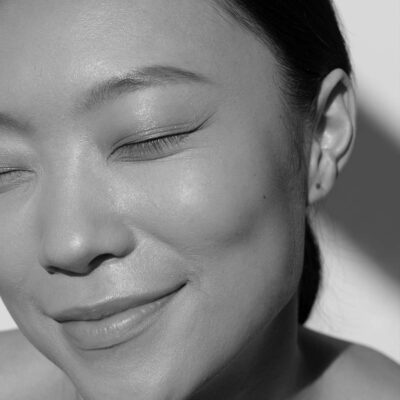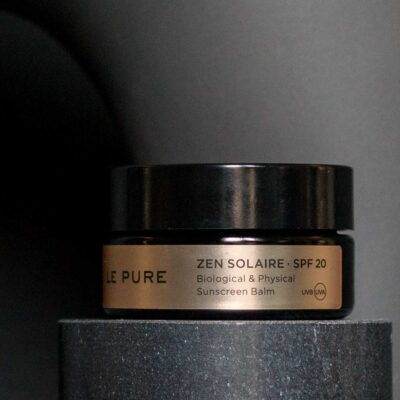Sunscreen Filters that Provide Sun Protection for the Face
When it comes to protecting your skin from the sun, it is very important to know the advantages and risks of each type of sunscreen filter. Finding the ideal sun protection for the face is crucial as the facial skin is more delicate, and it is exposed more frequently to UV radiation than the rest of the body.
Nowadays sun protection is oversimplified with SPF factors, while essential elements such as the correct functioning of the skin are disregarded. Before selecting a sunscreen filter, we need to examine all the pros and cons of each option to effectively protect our skin from sunburn as well as premature aging in the long run.

UV protection
We are exposed to different types of Ultraviolet Radiation (UV), mainly UVA and UVB.
UVA
95% of the UV radiation is UVA rays. UVA rays maintain the same level of strength during daylight hours throughout the year, and they can cause fine lines, wrinkles, dark spots, flaccid skin, and skin cancer.
UVB
5% of the UV radiation are UVB rays. UVB rays are largely responsible for sunburns and also skin cancer. The skin synthesizes vitamin D from exposure to UVB rays.

Sunscreen products that pass the broad spectrum test protect against both UVA and UVB rays.
The SPF rating indicates the protection from UVB rays. It is not a linear scale and the higher the factor the less difference in protection. If the product label explicitly mentions “UVA” or the term “broad spectrum”, then the sunscreen contains UVA protection that accounts for at least one-third of the SPF number. For example, a broad spectrum SPF of 30, has an SPF of 30 against UVB rays and at least a value of 10 against UVA rays.
High SPF sunscreens usually offer greater UVB than UVA protection, which can give you a false sense of security.
Biological sunscreen filters on the contrary can provide a higher protection against UVA radiation as they also act from within the skin.
There are also important risks and disadvantages associated with high SPF factors as they can reduce vitamin D synthesis, which can lead to a disruption in the skin’s metabolism. This interference can inhibit skin regeneration and provoke or aggravate brown spots and melasma.
No matter how high the SPF number is, you still need to reapply sunscreen every 2 hours to ensure optimal protection. Keep in mind that exposing your skin to the sun during peak hours can damage your skin, even if you don’t get sunburned.
Different types of sunscreen
To protect ourselves from the sun, we can choose from three different types of sunscreen that filter UV radiation: chemical, physical, and biological filters. Cosmetic sunscreen products often combine two or all three of these filters to increase the overall benefits.

Chemical sunscreen
Chemical sunscreen filters use industrial chemicals to prevent UV rays from entering the skin by absorbing the rays with a chemical reaction.
They can have a high SPF without leaving a white cast on the skin. Unfortunately they cause an accumulation of suspicious chemicals in the skin.
This is especially dangerous when they are applied regularly, as these chemicals can be absorbed through the skin. The active ingredients of chemical UV filters are ingredients such as oxybenzone, which are estrogenic, meaning they mimic oestrogen in the body. Numerous studies have linked this kind of hormonal disruption to cancer, endometriosis, and hormonal skin darkening (hyperpigmentation).
These industrial chemicals build up in the skin and disrupt its metabolism, cell regeneration and the skin’s self protection from free radicals.
They also hinder the correct synthesis of vitamin D through the skin, which is crucial for the correct functioning of the melanocytic cells and the prevention of brown spots.
Chemical UV filters also contaminate the water and the environment. Just a single drop of oxybenzone in an Olympic-sized pool kills corals and marine life. Therefore, these UV filters have already been banned in various regions and countries. It is very clear that due to health and environmental reasons, chemical UV sunscreen is not an optimal choice, especially not on a daily basis.

Although media outlets and some dermatologists still recommend chemical sunscreen, we consider them to present serious risks for the skin, the body and the environment in the long run.
The American health authorities FDA only recognises two active sunscreen ingredients as safe: the physical sunscreen UV filters zinc oxide and titanium dioxide.
All others, meaning all chemical sunscreen UV filters, are not recognized as safe and require further study by the FDA.
Physical sunscreen
Physical or mineral sunscreen filters contain mineral particles such as zinc oxide or titanium dioxide that prevent UV rays from entering the skin with a combination of scattering and reflecting the rays. They protect almost immediately after their application on the skin.
The physical filters used are primarily the minerals titanium dioxide and zinc oxide. The higher the concentration of these minerals in the formula, the higher the SPF, but also the whiter the cast they leave on the skin.
The minerals however are visible on the skin as an opaque white layer.
There are 3 different ways to minimize this whitening effect in a cosmetic formula:
1. Minerals in nano size
2. Chemically modified fats and heating of the formula
3. Combination with biological sunscreen

1. Minerals in nano size
Using the minerals in a very small size with nanotechnology reduces their white appearance as it is so small that our eyes can not see them. The problem with nano is that it is a new technology, and we still do not know exactly how its use in cosmetics can affect the health of the skin and our body.
While nanoparticles have to be declared on the product label, there are also regular-size minerals, which are coated with nano-size mineral particles. These types of coated minerals currently don’t have to be declared on the labels, so you need to ask the manufacturer if the minerals used are coated or not.
2. Minerals combined with synthetic and chemically modified substances
To increase the SPF value of mineral sunscreen, cosmetic manufacturers add a variety of synthetic and/or chemically modified substances to their products. The list of these substances is endless but includes chemically modified fats and waxes such as Caprylic/Capric Triglyceride, Cetearyl Alcohol, Propylene Glycol, etc. They can also be present in the form of a coating, which does not have to be declared on the product label.

Most of these substances also require that the formula is heated to 70-80°C. The heat enables a better dispersion of the minerals in the product, which further increases the SPF value. The heating, however, reduces or eliminates any plant nutrients of the formula.
Very often, mineral sunscreen is marketed as natural and organic, even though it contains the above-mentioned substances. Sometimes it even contains chemical filters and as the consumers trust the mention of “mineral sunscreen” on the label, they do not know or suspect the presence of chemical sunscreen in the formula.
The combination of minerals with synthetic or chemically modified substances creates a double layer on the skin that can interfere with its metabolism and regeneration mechanisms.
Due to these potential negative long-term effects on the skin, these types of sunscreen should only be used on rare occasions, when other sun protection methods are insufficient.
3. Minerals combined with biological sunscreen
The best way to increase the SPF value and the protection from UVA rays is to combine a sufficient amount of minerals (10-15% of the formula) with a high amount of biological filters (85-90% of the formula). The biological filters should contain only the highest quality of cold-pressed oils and whole plant extracts.
Biological sunscreen
Biological sunscreen filters are plant nutrients that act as photoprotectants for the skin.
Certain high-quality cold-pressed plant oils and whole plant extracts contain molecules with antioxidant properties that transform free radicals from damaging radiation into inoffensive molecules.
These powerful plant nutrients stimulate the cellular repair function as well as the skin’s own defense systems. They also potentiate its metabolism during the entire day, which increases the skin’s ability to regenerate and protect itself.
Biological filters allow the synthesis of vitamin D through the skin, which is crucial for skin health and to prevent premature skin aging such as hyperpigmentation and wrinkles.
Elaborating biological sunscreen at temperatures below 40°C is crucial to preserve the utmost of plant nutrients. This raw elaboration of all ingredients maximizes the antioxidant benefits of the formula and boosts skin regeneration and self-protection.
If the formula is combined with minerals, the lack of extreme heating, which increases the SPF, results in a slightly lower factor against UVB radiation in SPF lab tests. The concentrated plant nutrients along with progressive sunbathing can compensate for the lower SPF value on the label.

The protection that a biological filter provides increases with every day of application, since the skin’s repair and defence systems are getting stronger.
A few minutes of sun exposure per day is necessary for the skin to synthesize vitamin D. Together with a biological sunscreen the skin gets an even skin tone and color, while being able to improve its resistance against damage caused by UV radiation.
Biological filters together with a small amount of minerals such as Zen Solaire provide sufficient sun protection that acts with the natural self-defense mechanism of the skin.
Together with progressive sun exposure, the skin’s resistance to UV damage is improved over time. This type of multifactorial sun protection cannot be measured in the current SPF tests, as testing is done on a single day and on untanned skin.
Biological filters act from within the skin, enabling it to fight free radicals from UV radiation.
Photoprotective plants are therefore the better and healthier protection against UVA radiation.
Sunscreen formulas often combine different types of sunscreen filters. To evaluate a sunscreen product you need to know the approximate percentage of each sunscreen filter and the rest of the ingredients. Very often chemical or physical sunscreens advertise plant ingredients in their formulas, but the actual percentage is minimal and most of the nutrients get lost due to the excessive heating during the production process.
Clever marketing makes the consumer believe that these “fast cosmetics” are highly beneficial for the skin when they are often just a mix of water and man-made chemicals.
Truly biological sunscreen is very expensive in comparison as it uses organic plants and requires artisan elaboration techniques.
It is important that you evaluate the pros and cons of each sunscreen formula. We recommend that the formula should:
- Contain filters that are considered safe by health regulators such as the FDA
- Protect against UVA and UVB radiation
- Be free from harmful chemicals, nanoparticles, and coating
- Be free from ingredients that disrupt the skin’s metabolism
- Allow vitamin D to be synthesized
- Contain a high concentration of plant nutrients to fight free radicals while also stimulating the skin’s function to repair cellular damage.
- Be elaborated raw (below 40°C)
Chemical filters, even if they are combined with mineral particles and a minimum of plant extracts, are not a good option for the skin.

They may protect from sunburn, but may have many negative side effects as they deposit synthetic and other contaminating substances on your skin. They can make your body susceptible to hormonal disruption while they cause environmental pollution.
Physical sunscreen is a better option, but only if it is free from nanoparticles and coating. It should also be from waxes, synthetic fats and chemically modified fats as these substances create a layer on the skin that alters its functions of respiration and toxin elimination, which negatively influences the skin’s repair mechanisms.
Biological sunscreen without added minerals is a good option when being indoors or during short periods of exposure outdoors.
For prolonged and direct exposure, the ideal formulation is combining 10-15% of mineral particles with 85-90% of biological filters from plant nutrients. The minerals block UVA and UVB rays, while the concentrated plant nutrients fight against free radicals.
Such a high concentration of biological sunscreen boosts the skin’s metabolic function, resulting in profound skin repair and rejuvenation. It allows vitamin D synthesis, which results in optimal functioning of the melanocytic cells and therefore even skin pigmentation.
Although the SPF of biological sunscreen with 10-15% minerals may be lower than in other formulas, this combination offers you the best protection against harmful rays as well as skin aging and hyperpigmentation.
There is no doubt that any sun protection is better than no sun protection. By discovering “How much SPF your skin needs”, you can create your personalized sun protection strategy and pick the best sunscreen for your skin.
Remember that every sunscreen should be reapplied every 2 hours during direct sun exposure. Always avoid the sun during peak hours and wear a sun hat and protective clothing if you are outdoors for multiple hours.
Biological sun protection for the face is particularly important as the skin is thinner, frequently exposed to UV radiation, and more prone to skin aging than other parts of the body.












